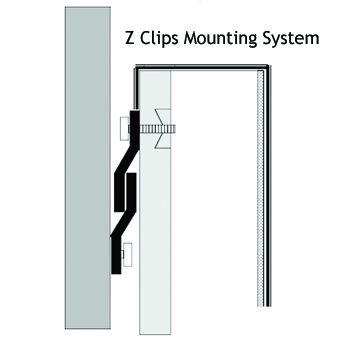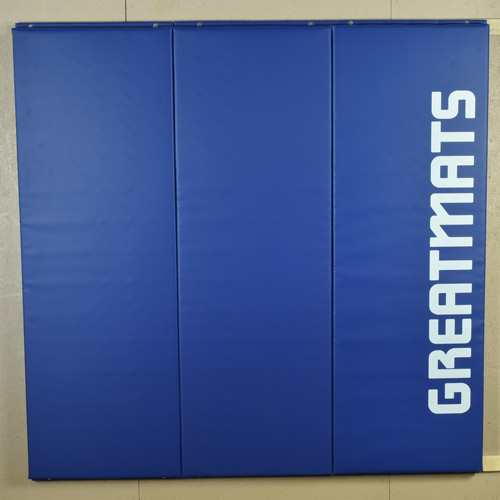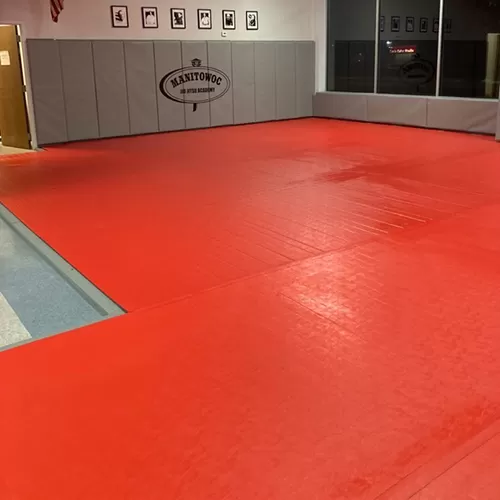Gym Wall Pad How To
Gym Wall Padding Guide
ASTM impact rated gym wall padding and safe room pads.
Gym wall padding creates a safe area for athletic workouts in a school gymnasium, protecting basketball or volleyball players who may crash into a hard wall while chasing a ball. Pads also protect those working on moves in martial arts or wrestling, as well as in sensory rooms, physical therapy centers, and indoor playgrounds. Greatmats’ customers install wall padding at home, too, to provide protection for children with autism and special needs.
On This Page
ASTM impact rated gym wall padding and safe room pads.
Ideas Before You Buy Gym Wall Pads
Tips & considerations for purchasing Gym Wall Padding:
The following blogs offer tips on what aspects to look for in wall padding before making a purchase.
Wherever you plan to use this flooring, these are all important things to learn before making your final decision.
- Find out what recommended thickness is for wall padding for specific sports arenas and practice areas.
Learn More: How Thick Should Wall Padding Be for Sports?
- Discover the different styles of stage padding and what the major differences are so you can determine the best style for your application.
Learn More: What Are The Differences Among Stage Padding Styles
- Learn the steps of how to measure your space for wall padding, starting with creating a sketch or diagram.
Learn More: How To Measure A Room For Wall Padding
Top 10 Questions About Gym Wall Padding
Below are the most popular questions we've received about gym wall pads. Click the question to get a detailed answer and explanation on these topics.- What Is the Best Gym Wall Padding for Home?
Creating a workout space at home to work on martial arts or creating a space for rambunctious kids to play becomes a safer option when you install wall padding. These pads offer protection for people who may crash into the wall, while also protecting the wall from damage. - Is It Hard to Install Gym Wall Padding?
When purchasing wall pads made to hang on a wall in a school gym, the pads often come with specific fasteners that simplify the installation process. A Z-clip installation locks the pads in place using hardware on the back of the pad and on the wall. Direct screw or nail installations to the wall are available, too. - How Does Custom Branding Work on Gym Wall Padding?
To create a special look in a school gymnasium, you may want to order wall pads that have printing that includes the name and mascot of the school. When ordering from Greatmats, just contact our customer service team to learn more about how you can have your information printed on your gymnasium wall padding. - What Are the Easiest Martial Arts Wall Mats to Install?
The easiest wall pads to install have specialized hardware and clips that attach to the back of the pad and to the wall before fitting together. You also have the option of using glue, furring strips, or hook-and-loop strips to attach mats directly to the wall. - Can Padded Flooring Be Used on Walls?
If you want a thinner type of padding over the top of your walls than the traditional school gym wall padding, you can hang interlocking foam mats typically made for flooring on the wall. These thinner pads are cheaper and may work better for an at-home installation. They even work to create an accent wall! - What Kind of Foam Is Used in Gym Wall Mats?
Wall mats used in a school gymnasium may consist of a few different types of cushioned foam, including polyethylene, polyurethane, ethylene-vinyl acetate, or a combination of two or all three of these. The most important trait of the foam is that it should compress when someone crashes into it, helping to absorb the force of the impact, before rebounding back to its original shape quickly. - Where Would You Use Pillar Padding?
If you are offering workouts or free play in an indoor open space that has support posts and pillars throughout the space, wrapping padding around those posts makes the space safer. Places like indoor playgrounds, martial arts studios, school gymnasiums, wrestling rooms, and daycares all may need pillar pads. - Where Can You Use Wrestling Room Wall Mats?
When practicing wrestling, grappling, or martial arts in a small room, you can keep the athletes safer by placing padding on the walls that protects them if they crash into a wall during workouts. It’s also important to add padding to any support posts in the middle of the room to keep everyone safe. - How Does Gym Wall Padding Work?
Wall and fence padding contains a thick, cushioned foam that condenses when someone crashes into it, absorbing the impact and protecting the athlete, before rebounding to its original shape. The foam in these pads often has a vinyl covering that protects the foam from tears when used either indoors or outdoors. - Can You Repair Gymnasium Wall Padding?
If you notice tears or unwanted marks on your gym wall pads, you can patch the vinyl covering to repair tears, as long as the patch has the same color as the vinyl. For pen and pencil marks on the vinyl, consider using dish soap and warm water or a vinyl cleaning solution to remove these marks.
Best Gym Wall Pad Products
2x6 Foot Wall Pad
One of the most popular gym wall padding options we offer at Greatmats is the 2x6 Foot Wall Pad. The 6-foot height on the padded panel is perfect for protecting athletes of all sizes when they crash into the wall, and the 2-inch thick foam delivers plenty of cushioning. More than a dozen colors are available in the vinyl covering.
2x6 Foot Safety Wall Pad
For a gym wall pad that includes a Class A fire-rated vinyl covering and OSB certification, count on the 2x6 Foot Safety Wall Pad from Greatmats. This 2-inch thick polyethylene foam has significant cushioning to keep athletes safe from collisions as they give maximum effort on the court.
2x6 Foot Logo Wall Pad
Select among more than a dozen different colors in the vinyl covering in our 2x6 Foot Logo Wall Pad, which also allows you to add lettering, logos, or artwork. With a 2-inch polyethylene foam core and a 16-ounce phthalate-free vinyl cover, it will protect athletes, while also standing up to rough treatment and continuing to look like new.
2x5 Foot Wall Pad
For a custom cut wall padding for a gym, a safe room, or a stage wall, count on the Greatmats’ 2x5 Foot Wall Pad. This 2-inch thick pad contains polyethylene foam and a 14-ounce vinyl covering that’s available in more than a dozen colors with the option of printing on it.
2x8 Foot Safety Wall Pad
In areas where you need taller-than-average wall panel pads, the 2x8 Foot Safety Wall Pad from Greatmats has you covered. At 8 feet in height, this panel covers a larger section of wall than the typical gym wall padding. It includes an attached backer board to simplify installation.
Gym Wall Padding Customer Installations
Holy Family School
In the 135-year old gymnasium at Holy Family School in Cincinnati, creating a safe space was difficult with the interior brick walls. The old gym barely accommodates the size of a basketball court, making our wall pads important to protect players from the minimal amount of space between the sidelines and the wall.
Gymnasium: 2x6 Foot Wall Pad
Quality Home Improvement, Inc.
After being hired to transform a metal building from a garage to an indoor basketball court, Quality Home Improvement, Inc., looked for the best – and safest – materials for the area surrounding the court. Selecting Greatmats to supply the wall padding behind the backboard delivered the cushioning required to keep the players safe during practices and scrimmages.
Home: 2x6 Foot Wall Pad
Clear Lake Schools
Clear Lake Schools needed to create a space where frustrated students could spend some time relaxing and waiting for emotions to calm down. The school covered a 10x10 foot space with wall pads from Greatmats, which they selected because they could secure them to the wall without worry of frustrated students tearing them down.
Seclusion Room: 2x6 Foot Wall Pad
Manitowoc Jiu Jitsu Academy
To maximize the available space for workouts at the Manitowoc Jiu Jitsu Academy, owner Joe Velasques decided to install padding from Greatmats across the entire space. The owner installed pads along the wall, along the window sills, and across the entire floor space, guaranteeing maximum usage of the space.
Martial Arts Workouts: 2x6 Foot Safety Wall Pad
West Omaha Martial Arts
After seeing tremendous growth at the West Omaha Martial Arts organization, the owners needed to make use of the entirety of their building for workouts. To ensure the area was safe for all athletes, owners Noel and Shannon Ginsburg installed padding from Greatmats around all the support columns in the space.
Pilasters: Pilaster Flexible Wrap
Centerline Martial Arts
Centerline Martial Arts has its academy on the second floor of an office building, meaning athletes have to work around support posts. To improve the safety in the space, the academy chose a padded wrap for the support posts, ensuring that students could work in this space without worries of collisions causing injuries.
Support Post: Pole Padding
Gym Wall Padding Installation & Maintenance Videos
How to Measure for Pole and Column Padding
Wall Pad Installation Instructions - Greatmats LipTB Safety Wall Padding
How to Install Wall Pads with Lip Top and Bottom






















